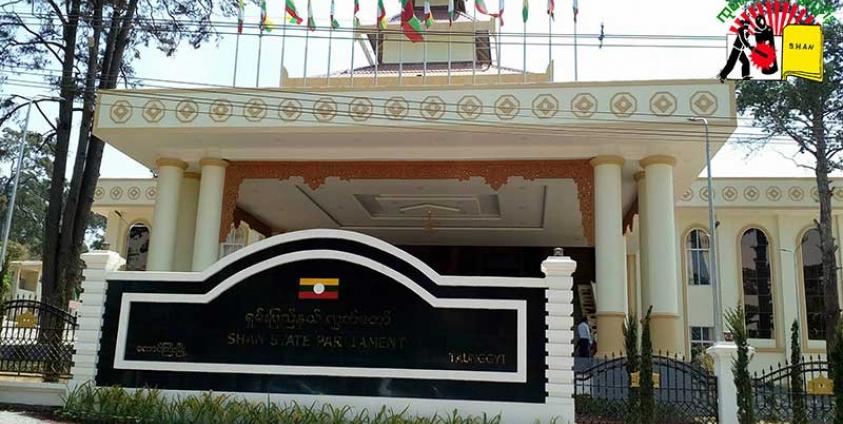Without a passable road, children in the mountains of Hsipaw walk miles to school and adults cannot access healthcare.
Children walk the red earth road without shoes, wearing dirty clothes and carrying their school supplies in plastic bags. They are going to school, which is held in a building that resembles a large bamboo hut.
The children live in Kon Houk village in northern Shan State’s Hsipaw Township. The name itself means “village on a hill.” To visitors from more urban areas—used to seeing students in crisp uniforms, carrying new books—Kon Houk, positioned on the top of a steep mountain, is like another world.
The community is only accessible on foot—cars cannot navigate the narrow paths.
“It looks like the clouds are below the village,” said Ko Zaw Nyi, who works with the residents of Kon Houk with the Dear Ranger social volunteer team.
Ko Zaw Nyi said that his team would be providing education and learning materials to children in villages like Kon Houk, and children in Shan State displaced by war. They work in the communities of Selkhan, Ner Ohn and Ner Lawt, all in Hsipaw, and in Wan Kyawng in Kehsi and “are trying to provide more to children in remote areas.”
“The road is really bad. There is no vehicle road. We have to go these villages with htawlarji [field vehicles]. If the wheels are trapped in mud, we have to push our vehicle,” Ko Zaw Nyi explained.
Shan State MPs called on the state government to repair the roads in the 15th legislative session on June 12, saying that the condition of the roads was prohibiting children from being able to get to school and locals from accessing healthcare at hospitals and clinics.
MP Nang San San Aye pointed out that some primary school aged children had to walk two miles on these roads to get to their classes, and that this put them at risk for accidents, abuse, and health issues.
“Everything is worse because of the bad road,” Hsipaw local Sai Than told SHAN. “For instance, if a student passes Grade 4, the student must go to middle school in another village. Schoolteachers don’t want to go to a school in remote area because of the bad road. In this way, many children leave their classes,” he explained.
Nang Eindray May, a teacher in the school in Wan Kyawng village in Kehsi, said that not only is there a shortage of teachers in remote areas, but that there is often a language barrier because the teachers don’t speak the ethnic languages of the students.
“Development is really needed in this area… I feel so upset to see these children,” she said.
Ko Zaw Nyi said that as long as difficult conditions persist, his team would continue to provide support to children.
“We are really happy when our assistance arrives to those children who really need it,” he said.







